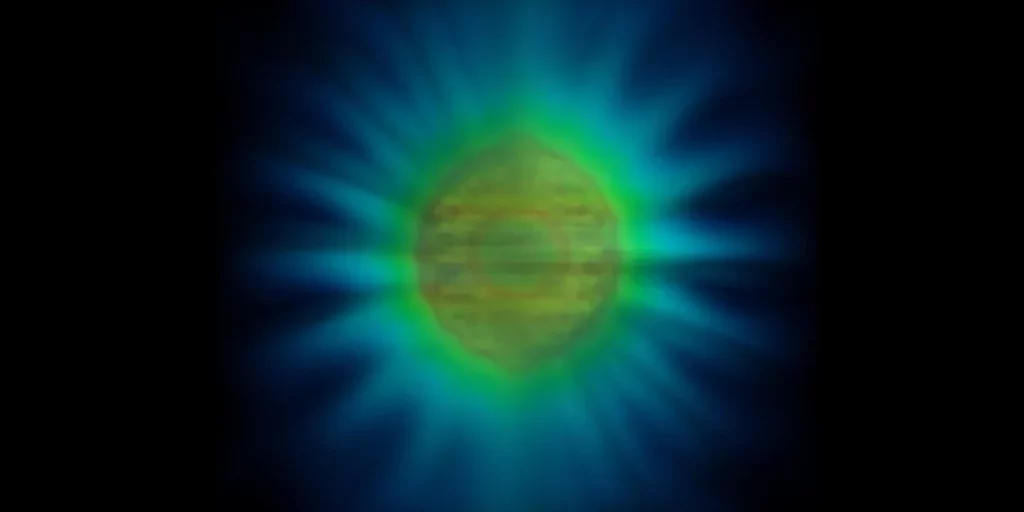When we look at the world around us, all that we see is thanks to light. It reflects, refracts, and interacts, carrying shape and depth from the objects it touches.
But what about light itself?
Physicists have now visualized the shape of a photon—the smallest unit of light—using a novel theoretical model. These findings offer new insights into how light behaves, potentially paving the way for innovations in nanophotonics and quantum technology.
What Does a Photon Look Like?
The visualization, produced by researchers at the University of Birmingham, is not a photograph; you can’t simply photograph a photon. Instead, it’s a detailed simulation derived from quantum calculations. “Our calculations enabled us to convert a seemingly insolvable problem into something that can be computed,” said Dr. Benjamin Yuen, one of the lead authors. “And, almost as a by-product of the model, we were able to produce this image of a photon, something that hasn’t been seen before in physics.”
The “shape” of a photon, as physicists define it, is an intensity distribution—a map of where the photon is most likely to be found at a given moment. Brighter regions indicate areas where the photon is more likely to appear. Dr. Yuen explained further for New Atlas: “Because it’s a quantum particle, you cannot measure it in one go as the measurement destroys it. However, if you were to repeat the measurement many times, you would see exactly this distribution.”
This achievement required a profound leap in quantum field theory, combining complex analysis and nanoparticle interactions. By simulating a photon emitted from an atom sitting on a silicon nanoparticle, the researchers highlighted an important observation: the environment profoundly shapes the photon. The nanoparticle, for example, made the photon thousands of times more likely to be emitted and even allowed it to be reabsorbed by the atom multiple times.
Why Does It Matter?
By better understanding the fundamental interactions between light and matter, scientists can design advanced technologies. The findings could be useful in fields ranging from quantum computing to renewable energy. “By understanding this, we set the foundations to engineer light-matter interactions for future applications,” said Yuen. “Think better sensors, improved photovoltaic energy cells, or quantum computing.”
This knowledge builds upon decades of quantum physics research. Until now, scientists could only model photon emission in idealized conditions, such as a perfect vacuum with a single atom. Real-world environments, filled with countless variables, remained largely uncharted. The Birmingham team’s breakthrough narrows these infinite possibilities into manageable sets, making precise modeling achievable for the first time.
As Yuen put it, “Lots of this information had previously been thought of as just ‘noise.’ But there’s so much information within it that we can now make sense of and make use of.” For a particle as elusive as the photon, this discovery is nothing short of illuminating.
The findings appeared in the journal Physical Review Letters.
This post was originally published on here





